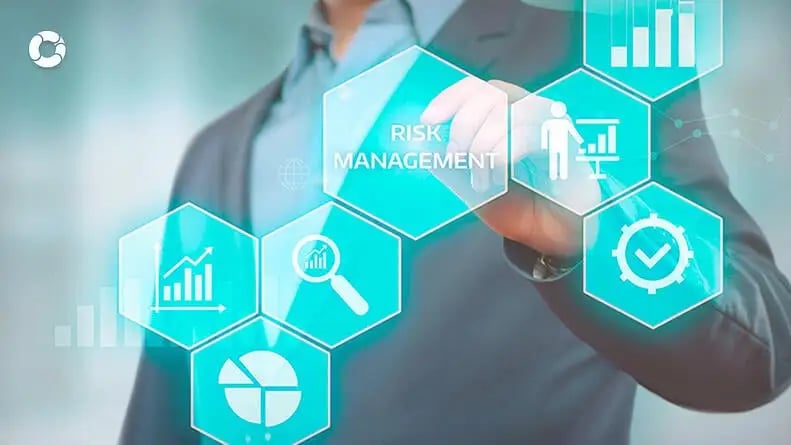Checking out the Significance of Risk Management for Effective Decision-Making Approaches
In the intricate world of service, Risk Management becomes a critical consider the decision-making process. The capacity to determine prospective hazards and chances, and plan appropriately, can lead to the difference in between success and failure. With devices such as SWOT and PESTEL, organizations are geared up to make enlightened selections, promoting resilience and versatility in an ever-changing atmosphere. Wondering exactly how this works? Allow's unpack the characteristics additionally.
Recognizing the Idea of Risk Management
Risk Management, an important component in decision-making, is frequently misinterpreted or oversimplified. Usually, it describes the recognition, assessment, and prioritization of threats to decrease, keep track of, and manage the likelihood or impact of regrettable occasions. Nevertheless, it's not simply concerning avoiding adverse results, however additionally about acknowledging possible chances. Risk Management involves regimented and structured techniques, utilizing data and informative assessments. It requires an extensive understanding of the company's context, goals, and the possible risks that might obstruct them. From monetary uncertainties, legal liabilities, calculated Management mistakes, to mishaps and all-natural calamities, it deals with numerous dangers. Importantly, reliable Risk Management is not stationary; it's a continual, progressive procedure that advances with changing conditions.
The Role of Risk Management in Decision-Making Processes
In the realm of calculated planning and organization procedures, Risk Management plays an integral role in decision-making procedures. It assists in identifying potential hazards and uncertainties that could affect the accomplishment of company purposes. By mapping these dangers, firms can develop strategies to minimize their impact, making certain service connection and stability. Risk Management therefore comes to be an essential tool in decision-making, assisting leaders to make informed selections based upon a detailed understanding of the risks entailed. It encourages a positive strategy, making it possible for companies to anticipate and prepare for possible future scenarios. This considerably minimizes the probability of unfavorable repercussions, advertising a lot more reliable and reliable decision-making strategies. Risk Management serves as an important component in the decision-making processes of any kind of company.

Exactly How Risk Management Improves Strategic Preparation
In the context of critical preparation, Risk Management plays a crucial duty. Starting with the identification of possible dangers, it even more extends to the execution of Risk reduction procedures. The role of Risk Management is dynamic yet not static, as it demands consistent surveillance and adjusting of approaches.
Recognizing Prospective Risks

Executing Risk Mitigation
Having actually established the relevance of determining prospective threats, the next action is to check out Risk reduction. This procedure includes developing and applying techniques to handle recognized risks effectively. It is an essential aspect of strategic planning as it improves decision-making by reducing possible adverse outcomes. Risk mitigation strategies can vary from Risk avoidance, Risk transfer, to take the chance of decrease. Each approach needs to be customized to the certain Risk, considering its prospective effect and the company's Risk tolerance. Moreover, reliable Risk mitigation calls for a deep understanding of the Risk landscape and the possible effect of each Risk. This understanding makes it possible for organizations to focus on dangers and allocate resources effectively, guaranteeing here that one of the most considerable hazards are resolved first.
Surveillance and Changing Approaches
Though Risk reduction is a vital step in calculated preparation, continual monitoring and adjustment of these methods is just as essential. This ongoing procedure allows companies to identify brand-new threats and reassess existing ones, making sure the applied strategies continue to be reliable in the ever-changing service atmosphere. It likewise offers a possibility to review the success of the Risk Management actions, permitting changes to be made where essential, further boosting strategic planning. Efficient surveillance and adjustment call for making use of analytics and key performance indicators (KPIs) to gauge efficiency. These devices give beneficial data-driven understandings that can notify critical decision-making. Monitoring and adjusting Risk Management strategies is a crucial element for boosting a company's strength and calculated preparation.
Situation Studies: Successful Risk Management and Decision-Making
Worldwide of organization and money, successful Risk Management and decision-making typically serve as the pillars of flourishing ventures. One such entity is an international oil business that alleviated monetary loss by hedging against fluctuating oil rates. In one more instance, a tech start-up prospered by determining and accepting risky, high-reward methods in a volatile market. A global financial institution, faced with regulatory unpredictabilities, efficiently navigated the situation via positive Risk analysis and vibrant decision-making. These situations highlight the value of sharp Risk Management in decision-making processes. It is not the lack of Risk, however the Management of it, that often distinguishes successful companies from not successful ones. These situations underscore the essential function of Risk Management in critical decision-making. importance of risk management.
Devices and Techniques for Reliable Risk Management
Browsing the complex maze of Risk Management calls for the right collection of tools and strategies. These devices, such as Risk signs up and heat maps, help in determining and analyzing possible risks. Methods consist of both quantitative techniques, like check over here level of sensitivity evaluation, and qualitative methods, such as SWOT evaluation. These aid in prioritizing dangers based upon their possible impact and possibility. Risk feedback strategies, an essential part of Risk Management, entail accepting, preventing, moving, or mitigating threats. Monitoring and controlling dangers, with normal audits and testimonials, ensure that the techniques stay effective. With these tools and strategies, decision-makers can browse the facility landscape of Risk Management, thus promoting informed and effective decision-making.
Future Fads in Risk Management and Decision-Making Techniques
As we explore the huge landscape of Risk Management, it becomes obvious that the methods and tools used today will proceed to evolve. The concept of Risk society, where every member of an organization is mindful and included in Risk Management, will obtain more importance. These fads herald a more inclusive and positive approach towards Risk Go Here Management and decision-making.
Final thought

Risk Management hence ends up being an important device in decision-making, helping leaders to make educated choices based on an extensive understanding of the threats involved. Risk mitigation approaches can vary from Risk avoidance, Risk transfer, to run the risk of decrease (importance of risk management). Effective Risk mitigation requires a deep understanding of the Risk landscape and the prospective impact of each Risk. Risk action approaches, a crucial element of Risk Management, involve accepting, avoiding, transferring, or mitigating dangers. The concept of Risk society, where every member of a company is mindful and involved in Risk Management, will acquire extra prominence
 Hallie Eisenberg Then & Now!
Hallie Eisenberg Then & Now! Michael Bower Then & Now!
Michael Bower Then & Now! Richard "Little Hercules" Sandrak Then & Now!
Richard "Little Hercules" Sandrak Then & Now! Marcus Jordan Then & Now!
Marcus Jordan Then & Now! Jeri Ryan Then & Now!
Jeri Ryan Then & Now!